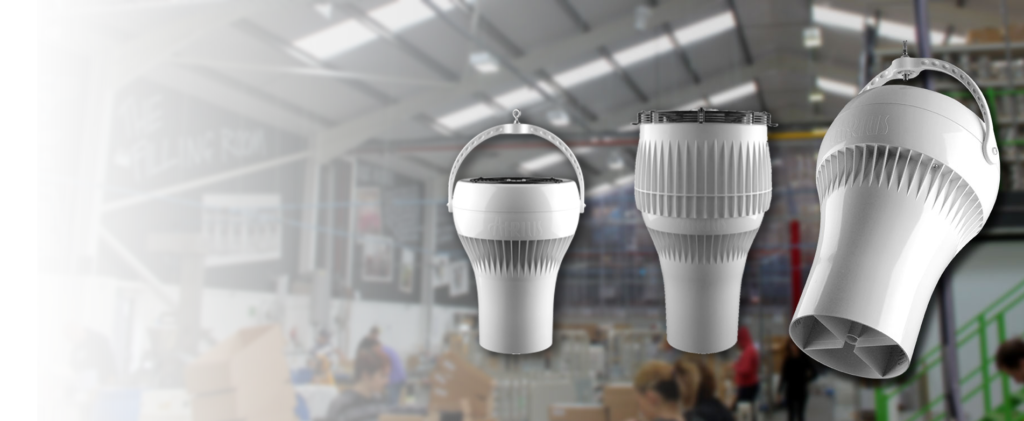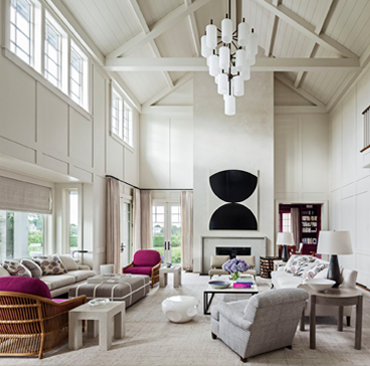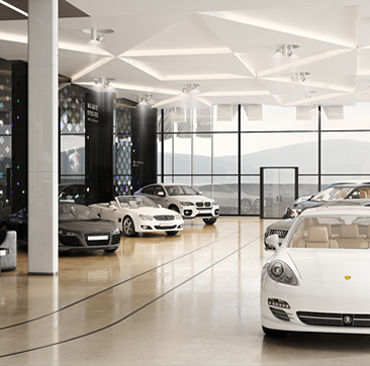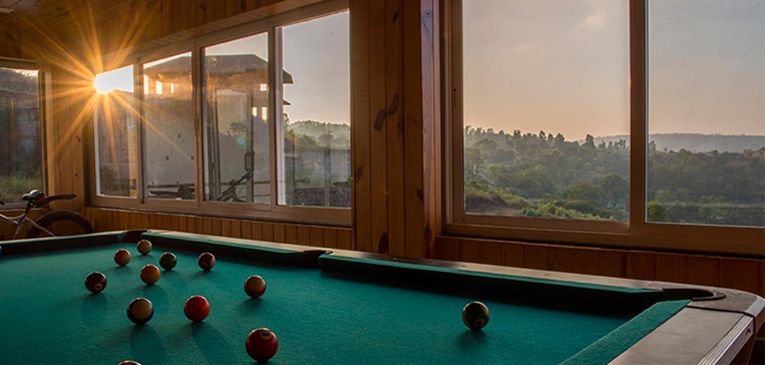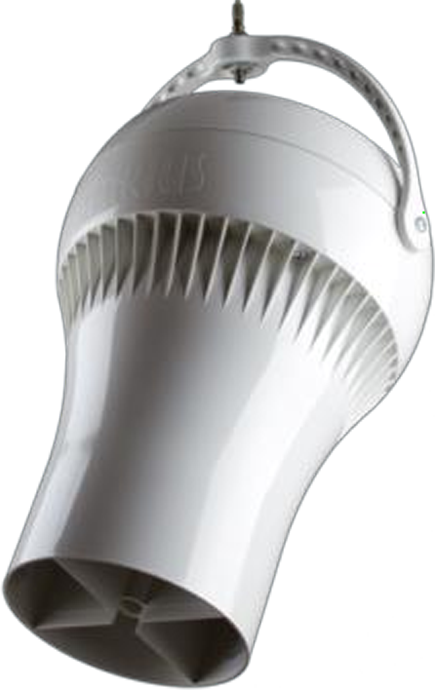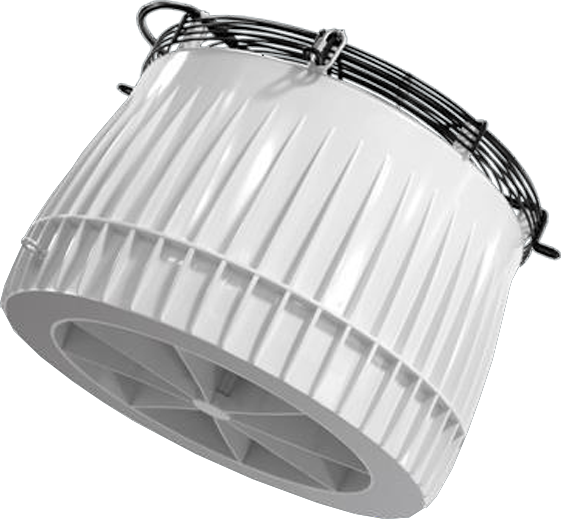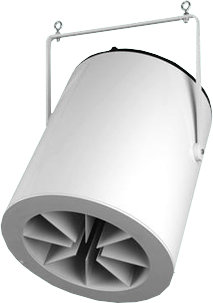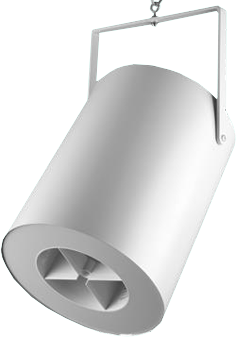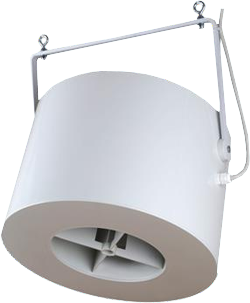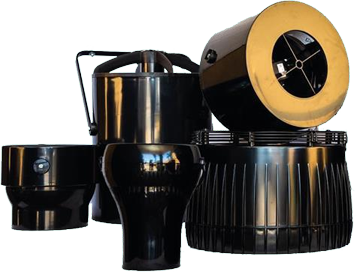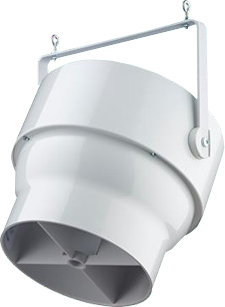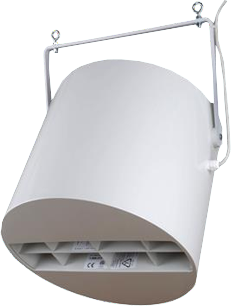- HEATING COSTS FALL BY 20% – 50 %
- COOLING COSTS FALL BY 20% – 40%
- CO2 EMISSIONS FALL BY 20% – 50 %
- KILLS 99% GERMS, BACTERIA & VIRUSES (PUREAIR ONLY)
- BOOSTS COMFORT FOR VISITORS AND WORKERS
WHAT IS THERMAL STRATIFICATION?
Thermal stratification is a natural phenomenon that affects all buildings. Hot, lighter air rises towards the ceiling. Cool air falls to the floor. The result is a dramatic temperature difference between the floor and ceiling.
The main negative consequence of thermal stratification is that your heating, ventilation and air conditioning (HVAC) systems have to work harder to maintain an even temperature. Your HVAC systems have to over-deliver on hot or cool air in order to resist the effects of thermal stratification.
Consequently, your energy bills are higher and the condition of your environment is rarely ideal.
Buildings with high ceilings are more likely to suffer from extreme temperature differences. Wasted heat will inevitably rise to the top of your building and have the opportunity to increase in temperature by up to 14°C. Conversely, heavier cooled air which is more difficult to distribute is wasted by sinking to low points in a building or by becoming trapped in difficult to circulate areas

Save Up to 50% on Energy Bills InWinter

Feel Up To 5°C Cooler In Summer Months

Full List of Benefits

- Reduces heating costs by 20% – 50%
- Reduces cooling costs by 20% – 40%
- Maintains optimum working / retail environment
- Reduces CO2 emissions by 20% – 50%
- Rapid ROI – usually between 12 – 24 months
- 5-year warranty
- Customers include FTSE100 companies to SMEs
- Eligible for carbon reducing grants / loans
- Established and proven technology
- Increases lighting lifespan
- Minimal maintenance required
- Minimal running costs (from €8 / pa)
- Recycles heat from machinery, lighting, solar gain
- Reduces condensation
- Reduces wear on existing HVAC equipment
- Simple to install with no ducting required
- Simple, inexpensive, and efficient CRC solution
- Small, versatile, unobtrusive units
- Stand alone or BMS integrated
- Works alongside all types of HVAC systems
- No draughts
How Does It work?
| A | irius destratification fans are installed at ceiling height, sending air down to the floor in a slow-moving column. When this air reaches the floor, it radiates 360° outwards across the floor until it hits a vertical surface and then rises |
As this air rises it entrains back into the descending column which creates millions of small vortices making the air move at the same speed throughout the whole interior space and a balance of temperature is created. This process is achieved using minimal air movement, near silent operation and nominal power requirements. Savings on average are between 20 – 50%, although higher levels have been recorded.


The Applications
How does Airius Compare to other Destratification fans?
Airius Destratification fans are different to other Destratification fans in that the heat only disperses after hitting the ground as can be seen in the pictures above. But how do other fans compare?

Airius Destratification Fan
Pros: 20 – 50% energy savings | 0°C – 2°C temperature variance | Low energy consumption (12W+) | Silent operation | Lightweight, small and unobtrusive | Avoids draught disturbance | Simple installation | BSRIA tested | Full destratification achieved
Cons: Roof level installation.
The ‘Blade’ or paddle Fan
The cheapest option which essentially churns the air, but as can be seen in the diagram the airflow disperses before the warm air reaches the ground.
Cons: Unequalised temperature| Roof Level Installation | Conical airflow spread disperses before reaching floor level.


The ceiling-mounted box fan
These units are fixed to the ceiling and send high velocity air directly to the floor. This creates draught problems and can pick up and circulate dust particles. They also consume high amounts of energy and are unsuitable for noise sensitive environments.
Cons: Unequalised temperature | Noisy | High energy usage | Large, heavy units | Roof level installation
Overhead ducted fans
Installed at ceiling height sending air to the floor through a series of ducts. High velocity airflow is required to overcome the friction of air against the inside of the ducting. Once airflow is distributed at floor level it results in localised destratification near the ducting exhausts only, since airflow is not organised to circulate and instead immediately rises back to the ceiling. Installation of the ducting is also expensive and time- consuming, causing extended disruption to a building’s normal
operation.

Cons: Unequalised temperature | Full destratification not achieved | Poor airflow circulation | Floor plans must be adapted placing workstations near duct exhausts | Ducting and its installation is expensive and disruptive | Extensive high- and low-level ducting installation.

The wall-mounted box fan
These are fixed to the wall at 1.8 metres from the floor and angled upwards. They send air at high velocity upwards to push warm air gathered at the ceiling to the floor level, which requires a high amount of energy. This fan is usually limited to industrial buildings where noise and excessive air flow are not a problem.
Cons: Unequalised temperature | Noisy | High energy usage | Large, heavy units | Recommended installation at head height, which can cause accident or injury
Finding the destratification fans for you
Speed Controllers
1 AMP Speed Controllers
The Airius 1 Amp speed controller can be used to set your Airius fans to up to five different speed settings and can accommodate the following amount of Airius fans.
The Airius Speed controllers are maintenance free, but any modifications will void the two-year warranty.

| Model No. | 10 | 15 | 25 | Pearl P3 | Pearl P2 | Pearl P1 | 45PS
4 |
45PS
2 |
Sapphire PS4 | Q50 PS4 | 60 |
| No. of Units | 13 | 10 | 5 | 13 | 10 | 5 | 4 | 1 | 4 | 2 | 1 |
5 AMP Speed Controllers
The Airius 5 Amp speed controller can be used to set your Airius fans to up to five different speed settings and can accommodate the following amount of Airius fans.

| Model No. | 10 | 15 | 25 | Pearl P3 | Pearl P2 | Pearl P1 | 45PS4 | 45PS2 | Sapphire PS4 | Q50 PS4 | 60 |
| No. of Units | 67 | 53 | 25 | 67 | 53 | 25 | 20 | 6 | 6 | 11 | 6 |
The Airius Speed controllers are maintenance free, but any modifications will void the two-year warranty.
Further Reading
Our Location
Floor One Block B, Monksland Business Park, Athlone, Roscommon, Republic of Ireland
Email Address
info@ermensystems.ie
Phone Number
+353 90 649 0050
FAX
+353 90 640 0102


